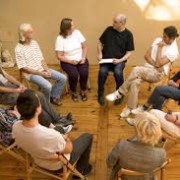Releasing Lifelong Anxiety
A client came to me last summer (I’ll call her Amber) with anxiety so intense that she had to go on a leave of absence from her job at a hospital where she drew blood from patients. She shared that she had experienced depression and anxiety her whole life, but lately her anxiety had become much worse at work. She described a recent incident when she was drawing blood from a patient who was hooked up to various machines that were making beeping noises. Suddenly, panic came over her for no apparent reason, and she had to leave work in the middle of her shift. Her anxiety was so severe that she had to take a leave of absence from work and she was starting to have panic attacks at home. This is when she sought me out to help her understand and heal the source of her anxiety and depression, as well as feelings of guilt and undeserving.
We began to explore the source of her anxiety in her present life, but she intuitively felt that the source of her anxiety and negative feelings started so young and it felt much deeper than anything that had occurred in her present life. We shifted gears and did a past life regression which ultimately turned into a deep healing session within the life between lives realms.
In the past life, she initially saw herself as a young boy living with his mother in a home with a very challenging environment.
Me: What does your home life feel like for you as you grow up?
Client: Life feels like tar…gross, dirty and stuck. I don’t have a dad…I never knew him. My mom is a drunk. She’s very mean and abusive physically and emotionally. I don’t feel loved. I never know when she’s going to lose control and what will happen. She scares me and I feel like I have to take care of her. I’m embarrassed at school because my clothes are bad, so I don’t go often. The only good thing I have is my dog…he’s a yellow lab.
We moved ahead in time a couple of decades, to a scene after he is married with children. He is having a meal with his wife, their baby and their 8-year-old son. Initially, it seems like a happy time, but as we relaxed deeper into the scene, more depressing feelings and information began to emerge, revealing repeating dysfunctional generational patterns.
Me: How would you describe what your wife is like?
Client: She is a good wife, and she loves me, but it’s hard. I don’t feel deserving of her. I’m not a good spouse. I have some mental health issues and I drink a lot at home at night when I’m not working. My son is my pride and joy, but I scare him sometimes when I’m drinking.
Me: What do you do for work?
Client: I fly planes. I feel successful at work, but at home, I drink too much and I’m not present with my wife and kids.
As we moved further ahead in time, his depression has worsened. We arrive at a scene where he is visiting his mother in the hospital because she is dying.
Client: I feel bad and sad and guilty. I haven’t had much contact with my mom. Life is depressing. I made it with a good career and a family, but I’m not happy with life. I feel scared and desperate…like if I can’t be happy now at this stage of my life, I’ll never be happy.
As we move ahead to the next scene, he sees himself flying an airplane, and he immediately knows that this life is coming to a close and it isn’t going to end well. He is feeling extremely depressed and suicidal. He purposely crashes the plane into a mountain while there were passengers on board.
Me: Go to the precise moment your soul leaves the body.
Client: The plane is turbulent. There is a lot of beeping sounds from the controls. I leave the body and watch the plane crash into the side of the mountain. There is so much smoke. The plane is busted up. I’m above the plane crash. My heart hurts that everyone died.
Me: Do you stay around that scene very long, or do you get a sense of pulling or drifting away at some point?
Client: I stay there.
Me: (long pause) As earth time goes on and on, do you eventually drift away, or does it more feel as though you continue to stay there?
Client: I stay there. It feels like part of me is still stuck there.
On rare occasions, clients do not move higher into the soul realm after death. These may be times when they die in a traumatic way, or are experiencing very heavy emotions at the time of their death, or perhaps they feel a strong responsibility or desire to stay around the earth for a while. In these cases, I have that client energetically release the heavy trauma from that life from the physical, mental and emotional energy bodies, and ask them to visualize a shaft of light to move into as an energy current that can bring them to a higher vibration in the spiritual realm. In shaman terms, this is called a soul retrieval. Alternatively, we can simply call upon higher guidance. In Amber’s case, she called upon her guardian angels. She could immediately sense them, and began to describe what happened next.
Client: Their essence feels like a light of source energy and I soak it in. It feels so loving and good. Now they’re bringing me to a beautiful waterfall. It’s purifying and cleansing. It feels like a relief. I’ve had reoccurring dreams here of this place. One of the angels is a male. His name is Luke. I feel safe. He says, “Let it all go, you’re ok now.”
Amber began to tear up as she released all of the fear, depression, sadness and feelings of undeserving that had carried over from that troubled past life to her present life. She then got back a part of her that was lost and covered up while she was carrying that heavy emotional energy. She described the feelings and vibrations that came back to her.
Client: It feels like pure whole and completeness, like energy is being restored. A refreshing rebirth. So calm.
While she rested in the high vibrational healing energy, her soul began to clearly see how the depression and anxiety in that past life had its roots in unresolved trauma from a very turbulent childhood of living with an alcoholic mother. These heavy, unresolved, fear-based emotions had snowballed into a stronger force of depression and anxiety, which in turn, led to the traumatic suicidal ending of that life. The fear and guilt of this trauma had carried over to impact her present life. She then saw how the beeping noises of the hospital instruments where she was drawing blood had triggered the unconscious memories of the beeping noises of the controls of the plane as it crashed into a mountain, creating the fear and panic that had paralyzed her at work.
Three weeks after her session, Amber emailed me an update. She wrote: “Right after the session, my anxiety was nearly all gone! So many insights came to me. I was able to go right back to work, and I’m feeling so much better. Thank you so very much!”
We have physical, mental, emotional and spiritual energy bodies. When we die with intense, heavy pain or emotions, this energy can sometimes carry over to impact a present incarnation. Within ourselves lies not only the source of our trauma, but also the solution to our trauma. Since we are multi-dimensional beings, we have the capacity to move to higher vibrational realms to connect with our eternal soul selves and higher guidance to receive insight, clarity and healing. We can then move forward in our present life, free from the heavy traumas of the past that hold us back in this life. Then we can more easily allow the brilliance of our soul selves to shine through.











